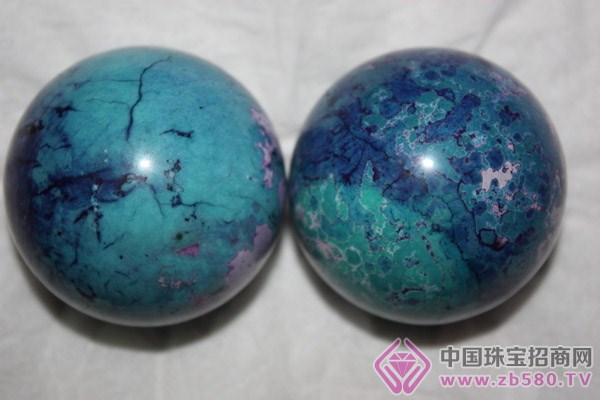Gem identification: see the truth in the contents

Natural gemstones are often far more valuable than synthetic gemstones, so being able to identify them correctly is a superb skill. One of the best ways to identify whether a gemstone is natural or synthetic is to pay attention to the type and variety of its inclusions. Certain types of inclusions are more common in natural gemstones than synthetic gemstones of the same type. For example, needles, clouds, liquids and crystals are common in natural gemstones.
Crossed rutile needles (called "silk") are common in corundum.
The inclusions commonly found in amethyst are deep red needles of hematite (magnification 10 times). Hematite needles are slender as needles. These inclusions are only found in natural gemstones.
Synthetic gemstones generally have inclusions specifically tailored to their growth pattern. These features include translucent to opaque colors, rough and meshy appearance, which contrasts sharply with the "fingerprint" inclusions of natural, transparent, localized crack healing. For example, you will find cosolvents in translucent to opaque white to pale yellow granules in gemstones.
The original co-solvent from translucent to opaque white is the signature inclusion of the Kazan ruby ​​synthesized by the fluxing method.
“By knowing the type of inclusions and their characteristics, you can tell if a gemstone is natural or synthetic. This will help you understand the history and value of gemstones,†GIA's Campus and Internship Gemology Teaching Manager (Carlsbad). BrendaHarwick said.
Here's a useful learning technique: first learn to be good at identifying all types of inclusions, then focus on the specific types you are interested in. We usually need advanced chemical and structural tests to determine what the inclusions are, but rutile and zircon are common confusing gemstones (depending on the type of gemstone).
But remember, what really matters is the type and quantity of inclusions, not their precise chemical composition. With this in mind, you will become a better gemologist.
This Montana sapphire contains dark black rutile crystals. When the gemstone is heat treated, titanium dissolves into the sapphire and combines with the iron to enhance the blue hue of the gemstone. This color diffusion inside the blue is evidence of the heat treatment of the sapphire.
This is the phenomenon of hydrothermal growth in synthetic aquamarine. This gravitational growth structure indicates that the aquamarine is synthetic.
Tips for observing inclusions
By looking at the gem under the microscope, you will see the number and general type of inclusions. This will help you determine if the gems are natural or synthetic, and this information will affect the value of the gems.
Studying gems under a microscope can also help you create your own inclusion "visual library" that will become a reference for your research on new gems over time.
Here are some tips for studying gems using a microscope.
Study inclusions in a variety of lighting environments, including: brightfield, darkfield, polarized light, and fiber optic illumination. You will find out how the gemstone responds to the light control path, revealing valuable information about the inclusions. Each type of light can generate new information and help you discover information that you might miss when using a light environment.
Observing the gemstone through the microscope's largest magnification lens, you will usually see the desktop facet and then enter the gemstone pavilion (this often gives you a beautiful view of the contents).
You can shake and tilt the gems and observe them from different angles.
Fiber serpentine "horsetail"
The most distinctive internal feature of garnet is the fiber serpentine (chrysotile) "horsetail", which appears in most or part of most pebbles or cut gemstones. Please pay attention to tiny crystals (probably chromite), all of which radiate around them. Zoom in 20 times.
Bubbles and curved lines
Larval-shaped bubbles and curved stripes (or parallel lines) do not appear in natural rubies. This phenomenon occurs in synthetic rubies made by flame method.
Faceted synthetic carbon silica
The groove is like a dark line in a faceted synthetic carbosil. Zoom in 10 times, dark field transmitted light illumination.
Hematite tablets and nebula needles
The inclusions are found in 7.88 carats of daylight stone and consist of orange hematite tablets and nearly colorless amphibole needles. Zoom in 10 times.
"Water lily leaf" inclusions
The most common inclusion in olivine is the so-called "water lily leaf" inclusion. In reality, the lily pad is a crack in the gap, caused by the expansion of solid small crystals, and more commonly due to the expansion of small negative crystals. Lily pads are an important feature in identifying olivine. Zoom in 20 times.
Pink-purple flash effect
This crack-filled 2.51-carat diamond exhibits a pink-purple flash effect. The plume is laser drilled.
Fluid inclusion
The tiny fluid inclusions of this three-phase inclusion come from an emerald found in a sunken Spanish sailboat, Atocha (Atocha); transmitted light, magnified 200 times.
Printing Shirt,Short Sleeved Printing Shirt,Cotton Print T Shirt,Print 100% Pure Cotton T Shirt
Shaoxing Blue Surge Fashion Co.,Ltd. , https://www.blue-surge.com